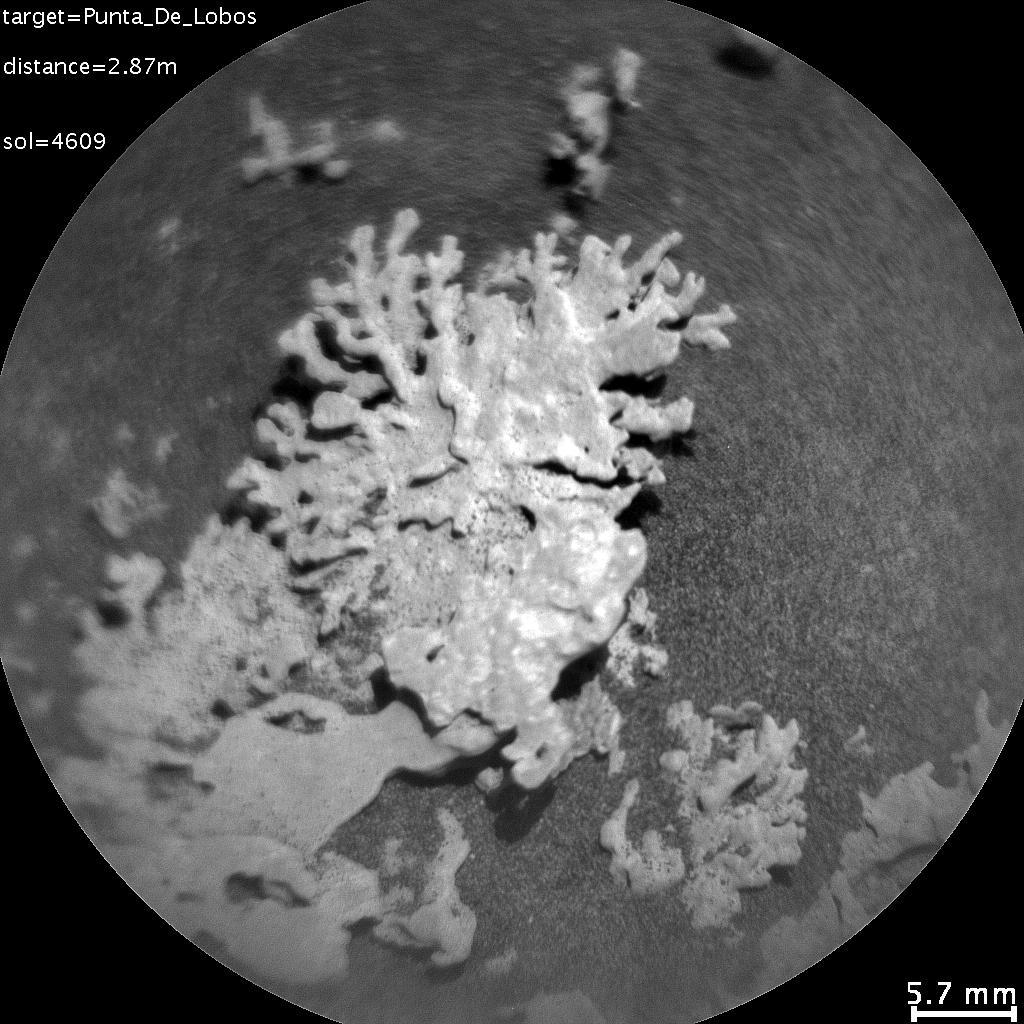Every now and then, one of the robots on Mars sends back a picture of an unusual rock it has found on its journeys. After all, that’s one of the reasons we sent them there.
These can range from the interesting (such as the donut-shaped rock which may not be from the planet) to the silly (hello, avocado rock. What’s up, big pile of “bones” on Mars?). While Perseverance roams the Jezero Crater, constantly finding all sorts of interesting rocks, NASA’s older rover Curiosity is still pulling its substantial weight.
In a find just announced by NASA, the rover snapped several images of a coral-shaped rock.

An image of the rock captured by Curiosity’s Remote Micro Imager.
Image credit: NASA/JPL-Caltech/LANL/CNES/CNRS/IRAP/IAS/LPG
Needless to say, this is definitely not coral. If it were, the headline would have been something a little more dramatic and maybe mentioning casually that we have found life on Mars. The rock, though it looks surprisingly coral-like, is formed by natural forces.
“Curiosity has found many small features like this one, which formed billions of years ago when liquid water still existed on Mars,” NASA explains. “Water carried dissolved minerals into rock cracks and later dried, leaving the hardened minerals behind. Eons of sandblasting by the wind wore away the surrounding rock, producing the unique shapes seen today.”
This process is seen frequently on Earth, and was possible on Mars back when it had water. Mars is currently a cold, desert planet, but that hasn’t always been the case. From looking at the formations and features on the planet, including the ones highlighted by the Martian rovers, we can tell it once had liquid at the surface, carving valleys and lakebeds across it. There is water on Mars today on the surface and below in the form of ice, though Mars is too cold today for liquid water to exist at its surface.
We still don’t know for sure where Mars’s water went, though several mechanisms have been proposed and backed up by evidence. One idea is that with weaker gravity than Earth and a thinner atmosphere, water vapor was slowly blown away into space. Another is that the water became trapped inside Mars, leaking down into its crust, an idea backed up by an ocean of liquid water potentially being found below the surface by NASA’s Insight Lander.
The answer, of course, could be a little of both. Further study, including by our coral-snapping robot Martian friends, will help pin down answers.
Source Link: Curiosity Spots "Coral Reef" Rock On Mars. It's A Sign Of Ancient Water